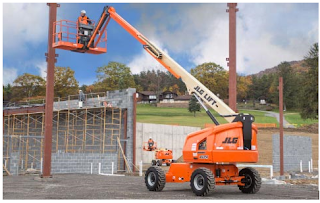Toolbox Talk Work at Height includes the maintenance and repair tasks, restoration tasks and Installation where it is necessary to climb a ladder or scaffolding to access the work area. Jobs, where scaffolding, a ladder or a motor elevated work platform, has to be used above 1.8 meters from the ground are called work at height.
Work at height hazards
The main risk of this type of work falls from at different levels either man or material but there are also other secondary risks such as:
- Radiation exposure.
- Contacts with electrical appliances
- Exposure to chemical or biological contaminants
- Falling of objects.
- Tools falling while handling
- Falling fragments and particles
- Exposure to extreme ambient temperatures
Work at height precautions
- Safety harness 100% tie-off
- Safety helmet
- Footwear with a non-slip sole
- Tool holders to avoid falls to the vacuum of the same, as well as rope and bags to transport those tools at height
- Do not try to reach distant objects while on a ladder, since you run the risk of the ladder defeating you. It is preferable to get off the ladder and move it.
- Do not play unnecessary balancing games
- Take care of the footwear (clean of grease or any other product that can slip)
- Do not use stepladders as support ladders, since their function is not that.
- The length of the ladder must be sufficient so that you can support his hands and feet at all times.
- Don't overload the platform
If you work with scaffolding: Better mark the dropped zone with hard barricades and post signage. As well as warn about the potential risks to personnel. Take measures so that people who have to pass through that area are not in danger of the collapse of the scaffold.
During the process, the materials should not be dropped into a vacuum. Use the gin wheel during the manual handling of materials. if materials are at a lower height it is not necessary to use hoists but they must not be dropped either.
Toolbox Talk Work at Height
Think about the protection not only the people who pass through this risk area. But also the workers themselves, make sure to wear the following types of equipment while working at height:
- Hard helmet
- Safety glass
- Safety shoes
- Safety harness
- Safety gloves
In addition to these physical measures, other measures are to ensure worker safety:
Auxiliary aids
Toolbox Talk Work at Height
Surely you have heard of auxiliary aids in work at height activities. What are they and what kind of risks do they carry?
Auxiliary means are the types of equipment that support carrying out the work. Very common in work at height and are the source of a large number of risks.
Toolbox Talk Work at Height
To use this type of support media, certainly, take proper safety measures into account, such as:
Follow the safe system of work such as permit to work system, risk assessment, job safety analysis, method statement etc.
They are usually:
- Ladders : (They should NOT be used to transport materials such as catwalks or scaffolding, they only serve to go up and down)
- Scaffolding: They are temporary, or mobile structures, which serve as an auxiliary means for the execution of the work at height activities, making a part of the access to workers and materials.
- Lifting platforms: Motor elevated work platforms (MEWP), man lift or man basket for raising and lowering workers and materials or in other words a temporary platform for executing activities.
- Barricade the area
- Post signages
- Wear PPE, particularly a full-body harness, helmet, safety glass, safety shoe etc.
- Take proper instruction and information from your supervisor,
- Make sure proper supervision and safety personnel coverage,
- Tie your tools with a lanyard to avoid the dropped objects,
- Avoid working in high wind
- Take frequently rest to avoid heat stress,




